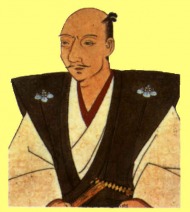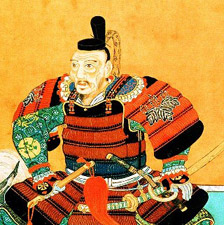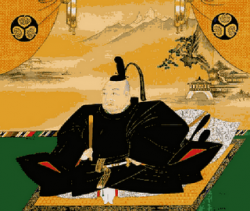Oda Nobunaga
In the mid 1500s, a daimyo named Oda Nobunaga started to try and reunite Japan. He was the first to do this after the period of Warring States. He was a fierce warrior who recognized the importance of guns that the Europeans were bringing into Japan. His soldiers were the first Japanese to use them in battles. They allowed him to defeat armies five times his size. One significant event that occurred while Oda tried to unify Japan was between him and the Hiei Buddhists. Mount Hiei had played an important role in both the political and military course of Japan. He saw it as a threat to the future stability of his country. Therefore, he destroyed the Buddhist monastery. He even slaughtered every single Hiei monk. Unfortunately, he wasn't able to finish his task because at age fourt-eight, he was assassinated by two of his generals. By his death in 1582, Oda controlled almost half of Japan, leaving the rest of his mission in the hands of one of his generals.
Toyotomi Hideyoshi
Oda Nobunaga's best general, Toyotomi Hideyoshi took his place. Hideyoshi was born a peasant. He rose to a common soldier of Oda, to one of his best generals, to finally a superb leader. Unlike Nobunaga, he didn't try to use violent force to get things done. Instead, Toyotomi tried to use peace and administration. His ultimate goal was to establish a national structure which allowed sections of the feudal pyramid to stay independent, but still work together. He didn't want a government that fully revolved around him. Toyotomi Hideyoshi controlled all of Japan by the time he died in 1598. After his death, generals fought wars amongst themselves to gain power over Japan.
Tokugawa Ieyasu
The winner of the wars was Tokugawa Ieyasu. Tokugawa grew up surrounded by conflict. His mother was separated from the rest of the family because of issues between his mother's and father's families. Later, when he was six, his father was murdered. Therefore, he wanted his country to be peaceful and stable. He studied the history of other cultures and concluded that only a strong, united government could bring these aspects to Japan. When Tokugawa was named shogun, Japan was growing ties with Europeans. For example, traders and missionaries were bringing Western goods and ideas, such as Christianity, to the Japanese. He worried that foreign influences would result in the destruction of Japan. Therefore, he drove out all foreigners. Ieyasu also banned Christianity. He declared it unethical to follow that religion. He even went into the extremes of executing all the Christians and forbidding any Japanese to leave Japan. This impacted Japan's connections with other countries. The country remained confined from the rest of the world until the 1850s. Tokugawa Ieyasu passed on his power to his son, establishing the Tokugawa Shogunate dynasty.



